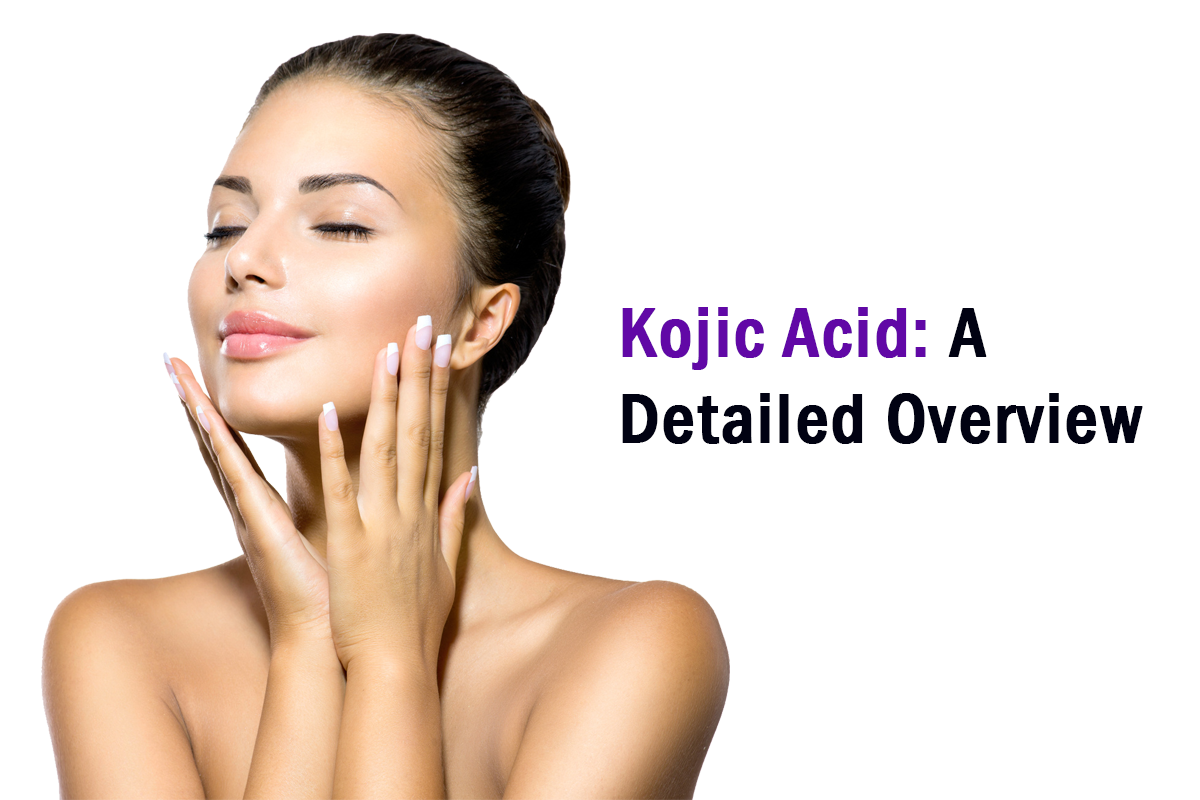
What is Kojic Acid?
Kojic acid is a natural, fungal-derived compound produced by certain species of fungi (such as Aspergillus and Penicillium) during fermentation. It is also a byproduct of the fermentation process in foods like soy sauce, sake, and rice wine. Chemically, it is a weak organic acid with the molecular formula C₆H₆O₄.
Kojic acid is widely used in skincare and cosmetics due to its skin-brightening, antioxidant, and antimicrobial properties.
Benefits of Kojic Acid:
- Inhibits tyrosinase, the enzyme responsible for melanin production, helping to reduce dark spots, age spots, melasma, and post-inflammatory hyperpigmentation (PIH).
- Often used as a safer alternative to hydroquinone.
- Who should use it (and who should avoid it)
- How to layer it with other actives
- What to look for in alpha arbutin products
- Natural alternatives for skin brightening
Skin Lightening & Hyperpigmentation Treatment
- Protects the skin from oxidative stress caused by free radicals, preventing premature aging.
Antioxidant Properties
- Helps combat acne-causing bacteria and fungal infections.
Antibacterial & Antifungal Effects
- May help reduce fine lines and wrinkles by preventing collagen breakdown.
Anti-Aging Benefits
- Extends shelf life by preventing bacterial growth in formulations.
Preservative in Cosmetics
How to Use Kojic Acid
Kojic acid is available in various skincare products, including:
How It Works in Skin:
- Serums (1-2% concentration)
- Creams & Soaps (for brightening and acne treatment)
- Peels (higher concentrations, used by professionals)
- Toners & Essences (for gradual brightening)
Application Tips:
What Does Kojic Acid Contain?
- Fermented rice, malt, or soy (in food products).
- Synthetically produced in labs for cosmetic use.
Pure kojic acid is derived from:
- Alpha arbutin (for enhanced brightening).
- Glycolic acid (for exfoliation).
- Niacinamide (for anti-inflammatory effects).
Often combined with:
Side Effects of Kojic Acid
- Skin irritation (redness, itching, or burning).
- Increased sun sensitivity (risk of sunburn).
- Contact dermatitis (in sensitive individuals).
- Potential instability (breaks down in sunlight, so dark/opaque packaging is best).
While generally safe, potential side effects include:
Note: Higher concentrations (above 4%) may cause more irritation.
Who Can Use Kojic Acid?
- Those with known allergies to fungal-derived ingredients.
- Extremely sensitive or rosacea-prone skin.
- Pregnant or breastfeeding women (limited research, consult a doctor).
Suitable for most skin types, especially those dealing with hyperpigmentation, acne scars, or dull skin.
Not recommended for:
Limitations in Quantity & Usage
- Recommended concentration: 1-2% for daily use, up to 4% in professional treatments.
- Frequency: Start with 2-3 times per week, then gradually increase if tolerated.
- Long-term use: Continuous use beyond 3 months may cause irritation—cycle with other brighteners (like vitamin C or azelaic acid).
Natural Sources of Kojic Acid
Kojic acid is naturally found in fermented foods, including:
- Soy sauce (fermented soy)
- Sake (Japanese rice wine)
- Miso Paste
- Rice Bran
- Certain mushrooms & fungi (Aspergillus oryzae).
However, dietary intake does not significantly affect skin lightening—topical application is more effective.
Final Verdict
Kojic acid is a powerful skin-brightening agent with antioxidant and antimicrobial benefits. When used correctly, it can help fade dark spots and even out skin tone. However, sun protection is crucial to avoid rebound pigmentation.
- Best for: Those with hyperpigmentation, acne scars, or dull skin.
- Avoid if: You have highly sensitive skin or allergies to fungal-derived ingredients.
- Alternatives: Alpha arbutin, azelaic acid, niacinamide (if kojic acid causes irritation).
Amazon Disclosure: As an Amazon Associate, We earn from qualifying purchases. Product prices and availability are accurate as of the date/time indicated and are subject to change.
Glycolic Acid
Azelaic Acid
LEAVE A REPLY
Your email address will not be published. Required fields are marked *
Fast Delivery
Across West & East India
safe payment
100% Secure Payment
Online Discount
Add Multi-buy Discount
Help Center
Dedicated 24/7 Support
Curated items
From Handpicked Sellers





LEAVE A COMMENTs
Kartika
Great article! But I have sensitive skin—do you think I should start with 0.5% instead of 1%? Also, can I mix kojic acid with niacinamide?"
Alex T
"Any recommendations for a good kojic acid serum under $20? I don’t want to risk buying a fake product online."
Jenny John
"I’ve tried hydroquinone before, but the side effects scared me. Kojic acid works slower but feels much gentler. Thanks for comparing the two!"